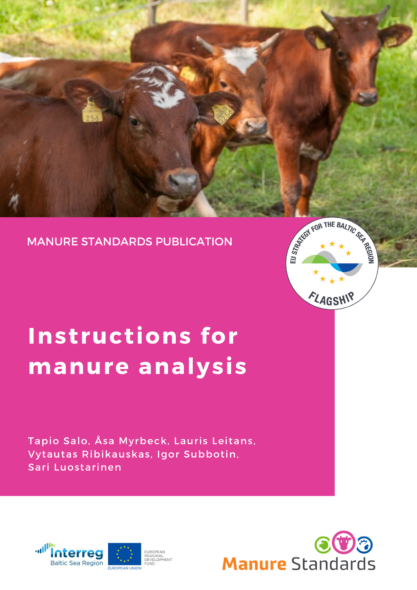To increase understanding of the methods used for manure analysis within the Baltic Sea Region, Manure Standards project has formulated instructions and recommendations for manure analysis.The purpose of the instructions is to provide laboratory personnel, authorities, advisors, and farmers information on the best practices in manure analysis to improve the accuracy of the analysis results.
Getting accurate results of manure sampling and analysis is crucial for farmers in planning and implementing fertilisation. Precision of manure data is also a prerequisite for decision making and research.
In Manure Standards project, 20 laboratories around the Baltic Sea Region were used for analyses of manure samples taken on the project’s pilot farms. The analysis methods they used were collected and the results compared. It became evident that there is a need for improved accuracy and knowledge sharing related to manure analysis.
There is a need for communication and knowledge sharing related to manure analysis
Because laboratories usually analyse samples from many different matrices, the specific properties of manure are not necessarily known in detail. Both liquid and solid manure are challenging, heterogeneous matrices and it is difficult to maintain respective internal reference samples.
Therefore, the laboratories should have knowledge on the average characteristics of the main manure types from different animal categories. Also, the use of international standards and participation in proficiency tests should be increased to improve the accuracy of the analysis results and the knowledge sharing between countries and laboratories.
Special attention should be given to total and ammonia nitrogen which are usually the most challenging parameters to analyse. Ammonia evaporates easily and the microbial activity in the manure sample can cause changes in their concentrations. Also some manure types can be trickier than others for analysis. E.g. the solid poultry and fur animal manures usually have high nutrient concentrations, which enhance the need of dilution and risk of losses.
Read more in the report by clicking the picture.

